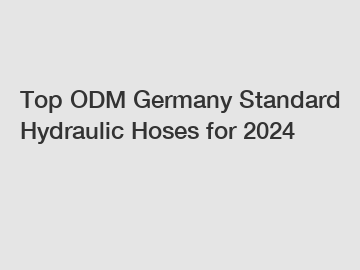How to Obtain CE Certification for Rubber Hose?
Obtaining CE certification for rubber hoses is crucial for manufacturers looking to enter the European market. CE marking indicates conformity with health, safety, and environmental protection standards. This article provides a comprehensive overview of the CE certification process, relevant statistics, and essential resources for rubber hose manufacturers.
Understanding CE Certification
The CE marking is a mandatory conformity mark for products sold within the European Economic Area (EEA). The acronym "CE" stands for "Conformité Européenne," which translates to "European Conformity." It signifies that a product meets EU safety, health, and environmental protection requirements.
Why CE Certification is Important for Rubber Hoses
- Access to the EU Market: The European market is one of the largest in the world, accounting for approximately 18% of global imports (Source: Eurostat).
- Enhanced Brand Reputation: CE certification enhances the credibility of the product, boosting consumer trust.
- Legal Requirements: Products without CE marking cannot be sold in the EEA and face potential penalties.
Steps to Obtain CE Certification for Rubber Hoses
1. Identify Applicable Directives and Standards
Various directives apply to rubber hoses, including the General Product Safety Directive (GPSD) and the Pressure Equipment Directive (PED). Familiarizing yourself with these requirements is the first step.
2. Conduct Risk Assessment
A thorough risk assessment should be undertaken to identify potential hazards associated with rubber hoses. According to a survey by the European Commission, 47% of businesses reported that failure to conduct a risk assessment led to serious market access issues.
3. Perform Testing and Evaluation
Products must undergo rigorous testing to ensure compliance with EU standards. This may involve:
- Material testing
- Pressure testing
- Environmental impact assessments
4. Compile Technical Documentation
Documentation must include test results, design specifications, and details of the manufacturing process. This document package is critical for EU market entry. Missing documents can lead to fines and rejections, with 30% of companies experiencing issues during market surveillance (Source: European Commission).
Additional resources:How to Ensure CE Certification for Rubber Hoses?
5. Sign Declaration of Conformity
Ultimate Guide to
Is A Type Of Flexible Plastic Pipe Used For Gas And Fluid Transfer: Insights for 2024
How to Choose the Right Polyester Spiral Belt for Your Juice Press?
How to Choose the Right Hdpe Distribution for Your Needs?
How to Choose 1060cfm Polyester Mesh Cloth for Optimal Performance?
10 Facts You Should Know about SAE100R1
The Declaration of Conformity must be signed by a qualified representative, affirming compliance with all relevant directives. It's a legally binding document that attests to the product's safety and performance capabilities.
6. Apply the CE Mark
Finally, the CE mark must be affixed to the rubber hose. The mark should be clear and visible, as per Directive 93/68/EEC requirements. Non-compliance can result in product recalls or bans.
Common Challenges Faced in CE Certification
- Navigating complex regulatory frameworks
- High costs associated with testing and documentation
- Lack of understanding of the requirements leading to non-compliance
Key Statistics on CE Certification
Understanding the landscape is vital for manufacturers. Here are some key statistics:
- In 2021, approximately 90% of products requiring CE marking were compliant on the first attempt (Source: CE Marking Association).
- A survey noted that companies typically spend €20,000 to €50,000 on compliance testing and documentation (Source: European Agency for Safety and Health at Work).
- Products with CE marking are favored by 70% of European consumers, as they associate the mark with safety and quality (Source: Market Research Future).
Resources for Further Information
- European Commission's CE Marking Guide
- CE Marking Association
- International Organization for Standardization (ISO)
In conclusion, obtaining CE certification for rubber hoses requires thorough knowledge of regulations, adherence to safety standards, and meticulous documentation. By following these steps, manufacturers can ensure compliance and gain access to the lucrative European market.
The company is the world’s best ce certification rubber hose, odm sae hydraulic hose manufacturers, china ptfe flexible hose pipe factory supplier. We are your one-stop shop for all needs. Our staff are highly-specialized and will help you find the product you need.
Additional resources:10 Innovative HDPE Uses You Didn't Know About
Choosing the Right Cloth Conveyor Belt: Key Factors Explained!
Why Choose Polyester Filter Mesh for Environmental Protection?
Top Trends in Dredge Discharge Hose 2024
How Does Eco-Friendly Packaging Reduce Environmental Impact?
Choosing Hydraulic Hose for AC Lines in 2024
The Benefits of Using PVC Pipe for Outdoor Water Line









